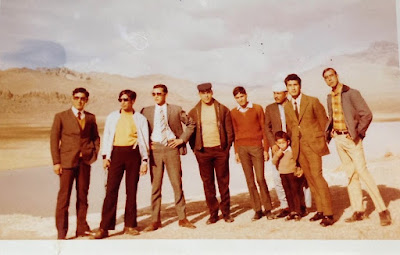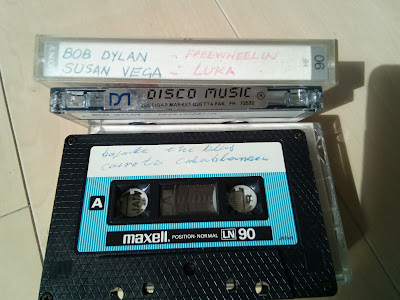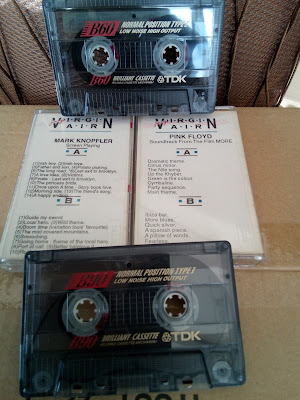“The main cause of disease is eating one meal on top of another.”
---------------------------------------------------------------------------------
What has surprised me most during my recent trips to Quetta in particular and Pakistan in general is the proliferation of eateries, of restaurants and cafes that have sprouted up everywhere. Every street corner now has a snacking place, a chaikhana or a BBQ joint. There are “food streets”, “food courts” and even “food towns” in every town and city, in shopping malls and even in mohallas. Same is the case with the TV channels with their glittering cooking shows, not to say anything about Youtube, Instagram and TikTok---nothing sells like food and sex online. Every TV channel has a cooking show, some even more than one. Chefs and cooks, of both the sexes, are the new celebrities, the new demi-gods of the silver screen. For someone of the old school like yours truly, these are really amazing developments that have radically modified the cultural landscape there, especially of the traditional food culture.
That wickedly witty old man Gandhi used to say, “You are what you eat.” Indeed: what we eat---not to say anything about how and how much we eat--- has deep effects on and implications for our personality and character. And not just on our physical health and well-being, but more profoundly on our moral and spiritual wholeness and integrity. I say this not because of some sentimental reaction but because in traditional cultures food and sanctity have always been tied together. As a gift of mercy from the Creator, the preparation and eating of food have always had sacred contexts, have been heavily ritualized, from the initial act of preparing the land to growing and harvesting, to the sacrificial rites of slaughtering animals and all the way to starting and finishing a meal with prayers. For traditional people, food has never simply been a matter of utility or about nourishing the body. It has always meant much more in the traditional, pre-modern universe. This was mainly because the very conception of reality and of man as a microcosm (anfus) reflecting the bigger macrocosm (aafaq)---as body, soul and Spirit/Intellect---differed from the modern understanding of homo sapiens as merely the Cartesian duality, body and mind. With the pornification of food and eating, as with most other things in the modern world, all these symbolisms are now lost to the modern mindset. (Observe the perverted food fads and fashions, the unrestrained quantification and rampant commodification that turns everything into material for all sorts of sensual, carnal indulgences---instead of offering grace, people nowadays first take filtered pictures of what they are about to eat and then quickly upload them on Instagram!),
Says the critical traditionalist writer Rodney Blackhirst:
"The health food movement is a profane reaction to the obvious inadequacies of the modern diet; it thinks in terms of chemical constituents and vitamins. In the traditional mind “nature” is, more importantly, Creation—foods are evidence of God‟s mercy and bounty, and the natural order reflects a sacred design with an exact relation to the human being….When modern man sees a traditional Chinese meal being prepared he may think no more than “Yum! I love stir-fry!” The health food enthusiast may take stock of the meal’s protein content, minerals and enzymes and feel satisfied, in a sentimental way, that it is full of “natural” ingredients. But a traditional man sees the bowl of the heavens in the smooth, black concave form of the wok, and he sees the grains of rice as stars and the vegetables—parsnips and carrots cut as half-moons or hexagrams—as representatives of the planets. He sees the stirring and agitation of the ingredients as mimicry of the swirling courses of the heavenly bodies and the whole act of cooking as a cosmological process in miniature. It is an act that participates in the processes of a divine and intelligent creation. Traditional approaches to foods place them within a wider cosmological context."
My great grandmother who died at the ripe old age of 95 used to tell us about the types of food using the old, traditional taxonomies or categories. For example, she would describe some food as hot (garam) while others as cold or cool (sard). Moreover, certain food were not good for men to eat, or not good to eat them in certain seasons; the same applied to women, especially when they were undergoing pregnancy and childbirth. Eating too much onions and coriander were considered not good for men. Certain legumes or lentils were not to be eaten with certain other foods at the same time. Foods, especially vegetables and fruit were good if they were eaten in-season, during their growing season and not out-of-season as people do these days because post-harvest technologies have made it possible to do so. When we had some injury, we were not allowed to eat vegetables such as eggplants because doing so would prolong the healing time and would make the wound worse. A natural craving for yogurt was a sure sign of health. Then there were the many mysterious qualities of garlic, olive oil, turmeric, black pepper and cloves. To the university educated moderns---the linear-thinking souls with flattened, shrunken intellects and dull, monochrome imaginations----who find any kind of traditional symbolism ridiculous and often laugh them off, these all now seem nothing more than old wives’ tales. But all those observations were based on a cosmology and metaphysics that held to the traditional understanding of man and his reality; the cosmology that always reminded us that “man does not live by bread alone” and that the bread that he did consume was not just bread in the ordinary, visible sense. “In fact, these systems were aspects of a profound sacred science transmitting the wisdom of an ancient contemplation of nature rooted in metaphysical principles.” (Blackhirst)
Then there were the special methodologies for preparing or cooking food. Not just the ingredients, their seasonality, the amounts to be used and their complex and complicated combinations, but the time needed to cook the dishes. Time was of the utmost importance in traditional cooking. Traditional cooking meant time, lots of time: slow food, as opposed to what we now universally call fast food. Rodney Blackhirst in his work on traditional food, from which I have already quoted above, thinks that it was an “alchemical” process. He argues:
"Time was considered an essential factor in nutrition. This is still recognized in the case of foods like cheese and wine, which mature over time, but it is no longer recognized as important to the preparation of grain and vegetable foods. Traditional methods, found throughout the world, typically take a whole grain such as wheat berries, cover in water or broth, add a little salt, and seal in a heavy pot cooked over a very low heat overnight or for several days. Other ingredients may be added at particular stages of the cooking. Jewish cuisine knows several dishes cooked for seven days, including the proverbial Chicken Soup where a whole bird, head to feet, is boiled slowly for seven days until it is reduced to a gelatinous liquid. This is indeed a type of domestic alchemy….Traditional long cooking methods seek to transmute food, not just warm it through. These methods of food preparation…transform the essence of foodstuffs, not only their crude constituents."
 |
| Soulfood: The Hazaragi dish kocha |
I want to end this piece with a word on gluttony, perhaps in the way of a layman’s exegesis of the hadith I have put at the head of this post as an epigraph. Also because gluttony is a typical modern malaise with all those fashionable but inherently harmful and fraudulent dieting techniques, the eating disorders, food wastefulness, imbalances in food production especially in the industrial production of meat and in the overall ecology of food. Modern, industrial food processing techniques are now one of the main causes of the planetary ecological imbalances: extremely resource exhaustive and unsustainable practices that have pushed all life to the brink of irreversible collapse. Many forms of depression and anxiety disorders are now closely related to modern food consumption patterns. Bulimia, anorexia and so on, all have an undeniable food connection. Meat especially needs mentioning. What was once a side dish, only prepared and eaten at rare and special occasions and that after the carrying out of strict rituals of sacrifice and prayers with the blessings of the highest religious authorities, is now the main obsession of many people the world over. No surprise here since modernity---a cynical theology of utter negation logically culminating in nihilism---has this diabolical cunning for inversion of everything: it turns what is trivial and secondary into something essential and primary and vice versa. Walk around anywhere in Quetta nowadays, or in any city in Pakistan, in the evening and the smell of grilled, charcoaled meat is the first thing that will fill your nostrils. No wonder that diabetes, high BP and heart failure remain the top killers in the South Asian region.
In his excellent books, especially in Ihya Uloom e Deen and in Breaking the Two Desires, Abu Hamid Al Ghazzali identifies gluttony (excessive desire of, or hunger for, food) and lust (sexual desire) as the two paradigmatic desires that often result in the destruction of the heedless and the forgetful (ghaflah). From these two carnal desires stem all the other sins of pride and arrogance, the craving for worldly status, for pelf and power, and the vices of envy, hoarding, hatred and oppression (zulm) and so on. The belly is where it all starts, he reminds us. If one is not mindful about what to eat, how to obtain one’s food (the question of halal and haram earnings), how to eat (the manners of eating, the adab of food consumption) and especially how much and how often to eat, the great Ghazzali tells us that one is bound to commit all the other sins listed above. And we cannot be mindful, cannot be aware if we do not have the right attitude of gratitude and humility towards food and especially towards our Creator who is also the All-Provider (Ar-Razzaq) of everything. Let me recall the wise words of my great-grandmother, an illiterate woman who had, obviously, not read any of the books of the great scholars, but what she used to say to us always carried the same kind of profound wisdom that we find in the words of sages like Ghazzali. In one of her typical exhortations she would say: “Eat what is in front of you. If you are a real man, a mard, then don’t complain about food because real men are not obsessed with food and desire less. Offer shukr and abstain from takkabur. Naan piaz, qaash waaz.” It meant that one must be content with what one has (as in food but also with one’s other worldly possessions). This was especially required of men and this attitude was considered noble, a true sign of culture and even of chivalry in males (she would give the examples of The Prophet of Islam, of the wise and righteous caliphs and imams, especially Ali ibn Abi Talib). Be content with what is available, she would say, even if it is just some slices of raw onion and plain bread. With food in particular, show gratitude and not ungratefulness.


































